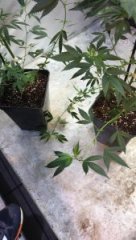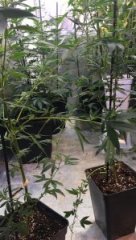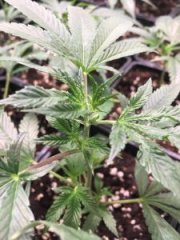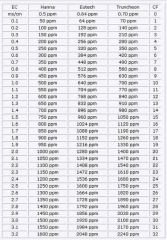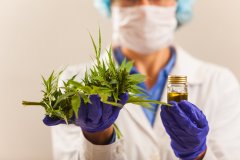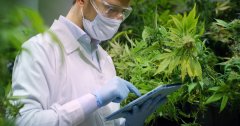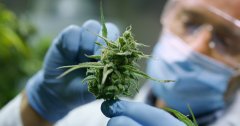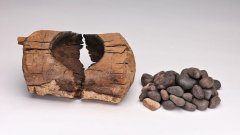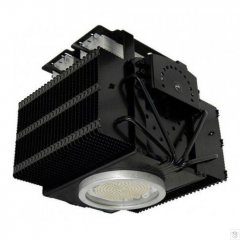-
Posts
980 -
Joined
-
Last visited
-
Days Won
15
JJ the Gardener last won the day on May 14 2022
JJ the Gardener had the most liked content!
Recent Profile Visitors
1,262 profile views
JJ the Gardener's Achievements
-

Bio Security - Hop latent viroid (HpLVd)
JJ the Gardener replied to JJ the Gardener's topic in Bio Security
The results of Spain were not satisfactory. The plants in the end were lost. In the end, the mother ended up degrading and the clones if they would root would be stunted and problematic with most leading to failure. -

Bio Security - Hop latent viroid (HpLVd)
JJ the Gardener replied to JJ the Gardener's topic in Bio Security
got an update, sorry no pics at this time from our friends fighting the good fight. The infected mother plant is progressing positively and a clone did root from the mother. While only one clone compared to many the clones is not a good ratio but the material used was not ideal. Positive steps forward and as this clone grows and has the mother improves we hope to achieve true positive results by using Chlorine Dioxide. CL02 -

Bio Security - Hop latent viroid (HpLVd)
JJ the Gardener replied to JJ the Gardener's topic in Bio Security
Current Chlorine Dioxide Use Some independent workings going on in Spain using Chlorine Dioxide to clean a plant of this viroid. It is being administered via foliar spray. Records are being kept and pending on the outcome more detailed information will be given. Thus far it appears to be working but it will take some time. The infected plant is a mother and is a set of clones. A positive lab test for the viroid was indicated for the mothers. Once it is felt the viroid is clean, a new lab test will be done to prove or disprove the viroid's removal or if it remains. I will keep this updated as I get more information. Thank you. -
Bio Security Systems Bio Security is a program that brings together pest, mold/mildew, bacteria/virus/viroid - disease into an encompassing program. I can speak at serious length on bio security but then I would lose people with too much information. So I will discuss simply but effectively explaining. Bio Security is typically an issue for midsized grow operations to the home grower often due to two several reasons. One is cost. Typically a grow operation is ineffectively funded and further still this is often due to an ineffective appreciation of bio security by the planners and managers/supervisors. I will try to assist with instilling an understanding of effective appreciation and how to effectively implement those bio security into your grow operations and/or how to adapt into your current plans. Bio security essentially brings the management of pest, mold/mildew, bactera/virus/viroid into your grow operations. For simple grow operations this is easier than it is for a more complex grow operation such as a rotating/perpetual operation. Regardless of size, once you understand the fundamentals bio security you then have the effective knowledge to manage your grow operation by creating a unique bio security plan for your specific grow operation. We will discuss prevention, treatment and how to implement into your grow environment for the following: pest management, Mold and Mildew, Disease from bacteria, virus and viroids. Virtually all growers are some point will run into pest and mold/mildew issues. Plant disease from bacteria and virus will be more on the rare side but with a viroid going around via clones raises the possibility that growers who would typically not see this type of issue may. For most growers, they do not get to plan out their location and have to make due with the grow area which is available to them. Typically these grow areas are not ideal but manageable for their purposes. Here are some key aspects that is a necessity in an effective bio security plan regardless of size or location of the grow operation. Stable environment with healthy lighting and air flow. Control of temperature and humidity in both in raising and lowering levels within short periods of times. Ability to control and filter incoming air and outgoing air. Grow area example, Processing/storage areas Mother area (optional) Clone area (optional) Vegative area Flowering area Harvest/dry/cure area Very good 4 light room setup with explanations While a grow room setup is not necessarily part of a bio security program it is the skeletal system for which the environment is effected. For newer growers this section will have more value but I recommend to all viewers due to his explanations. SETTING UP A CANNABIS GROW ROOM. WHAT I'VE LEARNED 6 YEARS DOING IT. EQUIPMENT, ELECTRICAL,GEAR. Grateful Grower Processing and storage area Processing area - Typically home and small growers will not easily have much processing space and it is understood that you have to do with what you have to work with. Do the best that you can. I tend to recommend basement grow areas for indoor growers as it typically offers a stable base environment. If your lucky enough to use an old apartment or if their is a bathroom with a shower in the basement and/or a laundry area with a sink is useable. Water, Sink/Shower: Hot and cold water Sometimes cold water is good for knocking off pest on plants. This is also in part why you want good water pressure. Hot water is mostly for cleaning. Good to powerful water spray options from direct to spray. Capability to isolate and spray down a whole plant if in containers. Such as a shower or deep industrial sink. A shower and industrial sink is ideal. A shower is perfect for effectively isolating a plant and treating the plant in an area to control potential contamination. Water Storage, You want your water to be at room temperature when you use it with plants. By storing a day or days plus worth of water in advance is ideal to ensuring ideal water temperature and oxygen levels depending on air stone pressure quality/pumps. For soil medias I recommend the consideration of fermented sea water or bio water from natural farming. http://culturalhealingandlife.com.www413.your-server.de/index.php?/forums/topic/37-inputs-section-3-fermented-seawater-and-bio-mineral-water/ A sink disposable, heavy duty industrial strength. This is not so much due to bio security as it is beneficial in helping maintain clean drain lines which is an important issue. While mainly a maintenance issue I will add just for good measure. Drain Cleaner/Mechanical and chemical/root products. You want to be able to be have a drain cleaning machine that can reach to the end of the pipes for which you are responsible for. Chemical and root management products should be used as needed and in the case of the root management products ensure a regular maintenance dose is consistently given per directions. Processing area. Solid tables that can withstand significant weight. Sturdy metal or plastic shelving broken down in table sections with a base and top is often sufficient. Use tubs or even cement mixers to mix your media/amendments/fertilizers evenly. It is vital to ensure that you evenly mix any inputs with the media. So ensure that you have enough room to effectively mix your media and do any processing work in that area. Ensure all tables and surfaces are cleaned daily, before and after use. Ensure all equipment, especially cutting equipment is cleaned prior to use, during and after use. Then stored correctly. Consider if viable to the use processing area as a giant lung room. This enables you to ensure a stable air out take that tempers the air and potentially better smell protection if applicable. You have outtake air, smell filtered if applicable, from grow areas sent to the processing room. The air in the processing room is then tempered with intake air from outside air and this air is then sent outside and back into the grow area. It is important to have effective air exchange for the areas that you are managing. For smell protection purposes, To create a stable intake of air for your grow areas. Ideally you would have a lung room for intake air and one for outtake air. In Frozen environments having a lung room for out take air as to temper the air before exhaust can be a necessity as to prevent ice formation at the exhaust areas. This can be a tell tell sign of a grow room, generally seen in houses when growing in tents and venting out a window and making ice formations. Fertilizer Processing/Storage area We often do not think of a fertilizing processing area and for home growers this might not be such a thing but understanding the wisdom of it will help you keep streamlined so to speak. The idea of a fertilizer processing/storage area is in part safety, sanitation, ease of use, consistency. Safety, store all fertilizer material off the ground, preferably some kind of racks/shelves. Keep in dry area and at room temperature unless the product requires different storage or handling. Rotate first in, first out. (use new stuff after old stuff is used up.) Sanitation, this one is very important as by not keeping the area clean issues such as cross contamination and pests. Clean all measuring cups/spoons/devices. Clean all areas that you work on. Ensure all equipment is cleaned, calibrated and ready for use after/before each use or as applicable. Ph, PPM/EC, brix meters etc. Waste Disposal - Waste disposal is one of the biggest issues in growing that we have. For home growers this can give the grow operation away and depending on situation this can potentially have disagreeable repercussions from a range of directions. This is part of what I call a footprint that is important to shrink down from security to cost issues. Due to this I advocate that most waste be used within the grow operation. This can consist of virtually all plant material. By combining composting/worm farming, natural farming inputs and biochar you can drastically diminish your plant material waste and footprint while creating inhouse systems that truly is a cycle. Except for diseased and pest affected plant material. This will need to be disposed off site and in a way to prevent contamination of disease or pest. Your area may have regulations and rules to follow. This system may not be as viable with crops subjected to pesticides and other similar controls. The following aspects can help you reuse plant material. You can find a balance to where this material is used in a cycle and depending on grow methods even play a big part in your plant management care. compost. Traditional or by using indoor composters. Can do only plant material or with other compostable scraps. I preferred to make a balanced compost but you can favor nitrogen to even phosphorus based depending on what you add to be composted and its percentages. Worm Castings/farms. One of my greatest moves was to make my own worm castings. plant material along with a balance of vegetable scraps. You can grind material for faster use or leave whole. I liked to grind most of the material but also would leave some scraps whole too. When you grind everything up it becomes a bit more difficult to maintain dry/damp conditions so be prepared to add more paper/cardboard/carbon. I also would add some biochar from fine to small particles to the castings. Natural Farming Inputs. (This was one of my dearest secrets many years ago.) I came to natural farming as a way to reduce my growing footprint during prohibitionist times. It turned out to not only do that but enabled me to fine tune the management of the plants especially during transitional stages of development. Natural farming inputs, click me. Fermented plant juice. You make this from healthy cannabis leaves from the time period you are wanting to support. Be it as a generalist all at once or once specific for specific grow periods I value this product highly. I recommend making strain specific and not mixing strains that are overly different such as strong sativa and indica as we want similar chemical make up in the leaves so that they work together better and more effectively. Veg - use FPJ from the vegetative period along with other applicable NF inputs. Transitional periods - use FPJ from transitional periods along with other applicable NF inputs. Bio Char - Bio char is mainly used to help with stems, root balls and hard bits. By making bio char from hard stems and root balls we essentially are making these bits into a type of charcoal that benefits the soil greatly by helping it maintain stability which helps you with maintaining healthy consistent soils. Used only in soil based medias. Hydroponics grow operations could make this into biochar and sell as a product. Mother Area - Good old moms, Just like in life, we tend to take moms for granted. In terms of bio security I see some SOP, standard operating procedures, talk about all the obvious aspects of sanitation and how to properly ensure operating procedures do not pass a contaminate on with lots of talk on cleaning and sanitizing. However, I do not see any talk on mother health. So I will. Mother health, I see in almost every video of someone be it a person or a company grow that the mothers are stressed. The number of leaves on a leaf is an indication. With stressed mothers, this stress makes your mothers vulnerable. Now with with pest and competent cleaning pest issues are not as likely as other issues such as mold/mildew. In such situations, adjust your day and night time temperatures/humidity to a bit shorter favoring dryer side of acceptance to you. This reduces the opportunity time for a spore to effectively drill in the plant in which the plant becomes infected. This is not a big issue for commercial growers but home growers can run into this when their environment is not ideal. However, stressed mothers from cloning also comes with other problems. The uptake from the mother is often negatively affected after cloning. As a result the plant is unable to make the optimum levels of internal plant chemicals and processes as effectively and efficiently as it is unable to make enough energy to support those needs of maintaining current growth, healing and making new growth. This issue is compounded over time potentially causing such problems as a reduction in terpines, rooting quality and speed, reduction in strength of new plant structure, longer transition times and finishing times. Recommendations. Either utilizing optimum mother SOP's (standard operating practice) or utilizing tissue culture to obtain your clones depending on your size of operation. Tissue Culture - I would typically recommend done inhouse. (the expense of setup can initially be expensive in terms of setup and implementation hiccups but over time I believe this is best practice.) Traditional Cloning - Create extra mothers and manage in a way to optimize health of mother and clones. Remove a smaller amount of clones per mother as to the point where the mother plant does not show stress after cloning. I like to allow some stems to grow a bit longer than traditionally flat canopy. By leaving some stems grow longer, we are able to concentrate a hormone that is better for growing roots once the clone is taken. This is why it is recommended to take clones from lower in the plant. Feed mothers a flowering feed one to 3 days before taking clones. Not the same time you foliar feed. This is to help get phosphorous levels into the leaves to better help in rooting quality and speed. Foliar spray the 3rd and 1 day before taking clones. Utilizing FPJ (fermented plant juice) designed for transition period - Foliar spray a natural farming FPJ, fermented plant juice that is designed for transition periods just before taking the clones has helped in the health of the clones. Any foliar spray that designed for transition period is usable and likely just as effective. After taking clones and every other feed. Utilizing FPJ (fermented plant juice) designed for strong vegetative period - Any foliar spray that designed for transition period is usable and likely just as effective. Foliar spray designed for transition periods tends to have more phosphorus which is beneficial to rooting and helping to control high nitrogen levels in the mothers which is unwanted. Feed mothers a balanced diet after cloning. This is help restore balance and keep nitrogen levels in check as high nitrogen levels in the leaves is detrimental to rooting of the clones. Keep detailed records and photos. This is to help to identify what works optimum for your environment and operations. Start with taking a percentage of clones per mother. Document, writing and in photographs and video. After, the next day, following day and up until you would take clones again. Every 3 days is acceptable. Review, analyze and adjust accordingly until you find your optimal levels in mother health, clone production and stress adjustment returning to healthy cycle that along with traditional SOP, standards of protocol, that address sanitation and pest management this will enable you to enjoy a true cycle of life! Ideally adjust: Environment, Percentage of clones taken, Test leaves to determine how much phosphorous and nitrogen is in the leaves before and after treatment and then determine increasing or decreasing foliar spray PPM/EC, to achieve desired percentages. Adjusting media feed may be necessary as well. By implementing realistic optimized management of your mothers you are the setting the stage for success. In many of my consulting surveys I have identified issues with the mothers in terms of their management. I have seen professional operations failing and in part it is due to not having an effective appreciation of middle to long term care not just on the mothers but the entire operation. It is easy to write a SOP for this that is detailed in cleaning and sanitizing and ensuring that continuation potential is removed to dramatically reduced to unlikely. However, to me this is only one part of the issue and I say that combining both of these directions the benefits will be impressive to the point that it will enable to truly begin to have an optimized grow operation with little to no risk of pest, disease when the sop's as a whole are followed and respected. Seedlings Cloness Transition Veg (early) Veg (Mid) Veg (late) Transition Flower (early) Flower (mid) Flower (late) Harvest Harvest area Sanitation of areas Cycle renews. Document: Records, analysis and adjustments d d d
-
Bio Security - Hop latent viroid (HpLVd) Hemp and Cannabis Bio-Security (HpLVd) I always found growing like being a sea captain. Which I know nothing about really but my point is this. In growing it is your job to bring to harvest quality and yield and a good part of nature is against you. To be an effective grower you have to know how to navigate those problems just as a sea captain has to learn to read and operate in heavy and unfriendly waters to the calmest. The HLVd (Hop latent viroid) in growing is like hearing an old sea captain talk about a rogue wave. While rare it happens and I will explain to the best of my understanding on how to navigate this issue from the home grower to the professionals. Bio Security is a relatively new term that integrates pest management to include the life cycles of the pest, mold/mildew and viruses together into a single topic. It should be stated that I am writing this from the perspective of best practice. I personally believe that transmission of this virus is mostly done through mechanical use most typical of clones and seconded lower potential by seed germination/transmission and insect feeding. I have read for and against academic papers and studies but the results of those working on the front lines such as those at nurseries and grow operations are why I tend to believe this is largely spready by mechanical means. I find this true more for those who operate with strict SOP's and professional operationalism. I find pest infection more of a potential for smaller more amateur grows operations to the home grower setups that are not operating by strict SOP's which have a higher potential to have poor environments and infestations compared to professional styled growers. It is within this area of growers that I have the largest concern. Due to this conflict I have written from a best practice point of view and I cannot with certainly that I agree 100% percent it is wholly mechanical based and not by some smaller measure of pest infection in the right conditions which would affect home growers who is in part a larger part of my pointed audience. This is likely already part of a current security plan but for newer growers and managers this information may have more value however I recommend that currently skilled and knowledged growers still refresh this material as to ensure your security protocols and latest understandings are effectively up to date. So while some of this information and topics may be common knowledge to you I suggest the method by which these bio pest and virus interact may further justify a more stringent overall security plan that addresses those individual aspects into one program that strengthens the security and safety of the grow operation. If you find that I am preaching to the choir. I would value any additional input that you would be willing to share. It is in community that solutions are truly found and all genuine contributions are highly respected. I have read some great writings on these viruses but most are written in the interest of laboratories and not of independent scientific or academic writings. I have read many academic writings regarding the virus issues and one can find for and against some treatments and vectors. Most of the academic and scientific papers and studies are in the hops and hemp field but cannabis has also been affected. It is currently at the point I cannot say with 100% certainty if some or all of this information is wholly factual as this area seems to have only recently received larger attention and study. Due to this I may or may not alter some of this writing as more understanding and knowledge is gained as developments unfold. Due to this, if you have interest. I would subscribe to this post as I will keep it updated as applicable. As with all my writings, this is an opinion that I based the science and reasoning that I have found applicable and applied that as my basis for this writing. Due to this I may alter my bio-security writing and recommendations. However, even if true, we would want to potentially implement the same bio-security measures for other reasoning with the same level of importance or close to it to justify any additional expenses and efforts. The justifications of some of the issues could change but that would not diminish the importance of other connected justifications for the security protocols. Sections. Virus information and identification. Understanding the Viroid Infected Plant Protocols Testing Treatment Generic Preventative Plans HLVd (Hop latent viroid) information and identification. The following affects Cannabis and Hemp. While there are other viruses that can potentially affect cannabis and hemp these are the two that that have most potential and likelihood of seeing at some point in your career. In the 20 years of my growing I have never seen a virus but operating procedures were far different back then compared to the relaxed settings and general protocols of today. In the operating atmosphere of prohibition the necessary operating procedures naturally worked against such issues but in todays environment those safeguards currently are eroding and should not easily be confident in without gaining an understanding of these viruses and implementing preventative measurements and correct treatment protocols when and if identified. Depending on the size and seriousness of your operation, the level of preventative management increases but this is in tandem with due diligence. What is the Hop Latent Viroid? The hop latent viroid (HpLVd) is an infectious pathogen that causes disease in cannabis plants. Also known as “dudding” or “dudding disease,” plants infected with HpLVd may or may not show symptoms (symptomatic vs asymptomatic). This is one of the parts that makes this viroid very difficult to remove. It has the following capabilities. To infect mechanically such as using the same blade between clones. Can continue in seed form. To lie dormant. Just when you think you got it out of your grow area and you have testing that verifies it is not present in the plants, it shows up. To activate at any time during the plants life cycle. Will diminish and plant quality and likely yield. Can be Asymptomatic. This means it can show no signs and the plant be 100% healthy and correct. It can infect others. It can turn on at a later time period. Potentially can show negative in testing. It can be active in one section or the plant or a branch and not in another section or another branch showing negative. Symptoms include: reduced vigor, abnormal branching, stunted trichome production, reduced potency, and an overall loss of quality and yield. HpLVd was also previously known as PCIA (putative cannabis infectious agent) until Dark Heart confirmed HpLVd as the cause of PCIA in 2018. HpLVd has been detected throughout the United States and Canada. Why Should Growers Care? If left untreated, HpLVD can seriously reduce a crop’s potency and yield. Every garden tested in 2019 was infected with HpLVd. Most gardens had an infection rate of about 25-50%, causing an estimated 44 million dollars in losses per year. HpLVd infections typically occur when an infected clone or plant is introduced into a healthy garden, where it spreads to other plants. Most commonly through trimming and cloning from plant to plant. How is it spread? Research about transmission methods is ongoing. The viroid can spread through different types of contact, such as mechanical transmission. This occurs when pruning tools are used on an infected plant, then on an uninfected plant. HpLVd can also be transmitted through the seed of an infected plant, though more research is underway to determine the transmission rate. I personally believe that transmission of this virus is mostly done through mechanical use most typically via clones and trimming and seconded and at a lower potential by seed germination/transmission and insect feeding. I believe stressed plants such as plants living under poor plant conditions and a stressful environment with infected plants and heavy infestation that the percentage of insect transmission strengthens greatly. Aphids appear to be more suspect in infecting plants compared to spider mites and thrips. This is based on opinion from reviewing the reports I have read. There is a PDF from the University of Wisconsin regarding hops being infected from varied aphids for both the Mosaic and Viroid infections. https://cdn.sare.org/wp-content/uploads/20171204115253/Hop-Viruses-A4053-03.pdf The latent nature of HpLVd makes it a challenging pathogen to detect and fully eradicate. A common scenario in an infected garden is that while plants look healthy, they are in fact asymptomatic and don’t exhibit symptoms. As a result, many growers are not aware that the pathogen is present and spreading to other plants in the garden. Videos explaining the virus. This is an excellent video describing the HLVd Virus. We are not affiliated with them. Please support them direct. Mushroom Cowboy This is an excellent video that will generally discuss this well. We are not affiliated with them in anyway, please support them directly at - https://www.youtube.com/channel/UCFACkeFHeEww8m0bt5Ug7ZQ Future Cannabis Project - Please support them directly, we have no affiliation. What to do once you suspect infection. The first step is determining if HpLVd is present in your grow operation. This is not as simple as it would seem. It is like looking for needles in a haystack. We know the visible ones but some are hiding and we need to find them. Initial identification and/or notice of an issue. Visually is typically how most growers will first notice this viroid. Growers will begin notice differences in the growth and an overall slow down in the plants development. The leaf and growth will look different as well. Leaves can look stunted to witches broom like. Dramatic reduction to loss of terpenes. Dramatic reduction in trichrome development. A golden appearance on the top of the plant, referred to as golden head. Not all infected plants will “look” infected or show symptoms. This is the Asymptomatic stage that some go through but they can pass the viroid on and they can turn on to an active state at any time. Identify all clones that come from an infected mother. If a clone shows an infection, assume the mother is infected and asymptomatic if the mother is not showing signs. Remove all applicable plants. I am comfortable saying you can finish the grow if not at the beginning of the grow as this viroid is typically spread via mechanical processes such as cloning and the trimming of plants. Clean trimming equipment between plants to prevent plant to plant transmission. In this manner trimming can infect clones of non infected mothers. Some illustrations. This video is very good at illustrating differences in quality and on the crop but it is only available at Youtube: https://www.youtube.com/watch?v=Y2_e9_TDfHM Pics - These pics are from Ripper Seeds, we have no affiliation but they illustrate excellent photos. Please support Ripper Seeds directly. https://www.ripperseeds.com/en/ Notice the severely stunted growth from the new growth area of the plant. This virus affects new growth dramatically and directly impacts yield, quality and finishing times. Notice how the growth hits the stress marks. The stems changed color and growth slows and shortens in size. If allowed to mature it will take longer and have significant and quality reductions. Notice how you can see the growth that affects the side limbs. Smaller growth and weaker stems. Helps mold/mildew to better take hold with thinner and weaker cell walls to penetrate. Easier for pest to attack. Notice how the whole crop is affected and it is does not appear to have been had leaves removed. A forest of plants susceptible to other and further infections from pest to fungi. This crops quality has been compromised. Save A Grow Update 4 and Hop Latent Viroid Video - We have no affiliation with this video maker. Please support him direct at: https://www.youtube.com/channel/UCdfDnqy2aM41aGllYSEg9FA medicropper Around the 2100 mark he will talk about the viroid. I believe this is how most people will come to a similar conclusion. Testing and treatment - Updated to include information regarding Chlorine Dioxide. Unless you can afford the lab work to treat the genetic it is not a viable solution to try to save infected genetics. If a special or a proprietary strain is fully infected (such as the entire grow or mother block), then eradication via tissue culture is the only way to clear HpLVd from that strain. A diagnostic screening test is the fastest way to determine the presence of the viroid. The tissue culture process utilizes a proprietary treatment that eliminates the viroid and leaves you with a healthy rejuvenated strain. Some branches can show clean and others can show infected in testing. Due to this we need to take 4 samples in a regular circular pattern at various heights from low, middle and upper branches. Approximately 12 testing points per plant. As I stated, this is best practice recommendations. It is up to you to find an effective compromise depending on your operational budget. Ensure that even and consistency is in selecting locations and choices. This can be seen as a costly step but it is of most important to ensure the viroid does not slip through this net. With those who have cant lose genetics, it is an option to use the services of a well qualified tissue culture laboratory. Essentially plant material is taken from the meristem as these plant cells typically grow faster than the viroid can replicate so any viroid or virus is more diluted in the sample. They then heat and cold treat this plant material as to ensure any viroid present is ideally destroyed. Then through tissue culture the plant is remade and should be in a revitalized and healthy state. This is costly and takes approximately 6 months. Chlorine Dioxide - I have seen via video and pictures from very trusted friends who are testing/working with infected plant stock with Chlorine Dioxide. currently this is in early stages but some positive work has been seen. Lots of work to do but exciting to see this information and is a wonderful xmas present as we all could use some good news in 2020! Here is some information on Chlorine Dioxide, https://medcraveonline.com/IJVV/chlorine-dioxide-clo2-as-a-non-toxic-antimicrobial-agent-for-virus-bacteria-and-yeast-candida-albicans.html Basically Chloride Dioxide is interrupting the virus or in the the case of HpLVd interrupting the ability of the viroid to effectively replicate to the state of causing the disease. This is effective in both plant and animal viruses. I can see the value of dispersing Chlorine Dioxide via uptake and via foliar feeding. Give first treatment to a thirsty plant. The idea is that the plant being thirsty will uptake more treated waters and gain an effective strong start against the viroid. Clones Soak new cut clones and seeds in Chlorine Dioxide before transplanting/planting. Mist with Chlorine Dioxide Clean all tools with Chlorine Dioxide Foliar use in between the feeding/treatment cycles. Do not foliar feed prior if you are making the plant thirsty to increase volume of uptake. Examples of home or small grower use water preparation. Aquamira Drops - Chlorine Dioxide - The Outdoor Gear Review TheOutdoorGearReview Lifesystems Chlorine Dioxide Tablets Lifesystems Here is are some current use of Chlorine Dioxide in irrigation and municipality water. There are lots for and against of the safety of Chlorine Dioxide but I find that this system for cleaning public water and in plant irrigation is a matter of proven safety as far as my opinion goes. Chlorine dioxide for pathogen control in irrigation Stabilized chlorine dioxide (Oxine ®) for horticulture Clean WateR3 Clean WateR3 Chlorine Dioxide in Municipal Drinking Systems Scotmas Group I believe that the Chlorine Dioxide is very promising in this viroid dilemma and I am excited to see how developments go. Prevention and effective operating protocols and standards are key and Chlorine Dioxide potentially plays a role in both. At the very least. I recommend understanding Chlorine Dioxide more and potentially how it may or may not fit into your growing operations. Safety information regarding CLo2 - Chlorine Dioxide Awareness Training Convergence Training by Vector Solutions Limitations of Chlorine Dioxide Dow Actions to take: Quarantine and/or remove and discard identified plants At the end of the grow, discontinue all effected and potentially affected plants to include mothers. All plants from infected mother. Remove clones derived from an infected mother. Remove mother. Remove any seed made from infected parents. Remove any plants from seed derived from infected plants. If using soil or media infected with insects. Consider disposing of the soil if you have had insect issues where they have a life cycle in the media. This is due to concern that media living insects could potentially infect the plants. Currently I can find no documentation to back this recommendation up but I add it in due to best practice aspects. I personally believe that the virus is potentially spread via insect in a perfect storm of worse case scenarios such as high humidity, insects that travel from plant to plant which still may hold the virus in wetness on its feeding apparatus rather than intern life cycle within the insect or in an transmission from internal fluids during feeding. I base this opinion on the understanding that infestations do not appear to be significant spreaders of this disease in well managed growing operations. Contact everyone who received a clone and or seeds from infected plants and infected from the line of plants. Ask that any seed sellers to contact their clients for those affected. Ask any clone sellers contact their clients for those affected. While doing this is costly, it will work more in your favor in the future than any short term benefit by not contacting and making right once you can. Selecting new stock/genetics. When selecting new genetics depending on your operating budget and level of seriousness I present the following recommendations. Try to purchase seeds from certified clean parents. At this time I am unaware of this being a thing but if your a large grow operation and use seed, ask for this. Ask for this and try to find breeders that take this viroid seriously. Consider older more reliable strains than newer strains. This is due to older stock being clean but they can still be subject to the viroid but risk factor is smaller I believe. When buying clones. Try to find clones from certified clean mothers. At this time I am not aware of this being a thing but ask for it. Select from vendors and nurseries that take the viroid seriously. Try to look at customer reviews that match your time line. Quarantine/Label/Mark all brought in genetics. Grow as you normally would. At any sign of viroid, Test for it and/or start over if certain or when positive test is certified. As you make your selections, pending no sign of the viroid within the grow than you can consider the grow operation clean. To verify that, have the selected mothers tested and certified clean. Standard Operating Procedure recommendations. Create standards that include for the effective cleaning of equipment between plants and/or for equipment sets for each plant or section. This is easier said than done and a major pain the butt factor I understand but also is dealing with this viroid. Mechanical transmission is the number one spreader of this viroid. I recommend making equipment sets and/or for the cleaning for each plant or section of plants. Sheers, Cloning equipment Any piece of mechanical equipment that would be used from plant to plant Implement any applicable preventive measures for insects, mold and mildew. Implement any Environmental improvements as applicable. Work to increase and stabilize Brix levels in the plants. This helps keep an eye on the health of the plants quality. Stabilization is key as this can be a tell tell sign of something more seriousness going on with the plant and that the plant is functioning well depending when and if it destabilizes.. Always check brix at the same time of the day. I hope this write helps you. This is not something to take lightly as its effects are darn right scary. Sorta like a corona virus/Aids for plants. Personally I know of growers who lost very prized genetics due to this and their cries were so loud in the force that I heard it. Credits - We have no affiliation with those in the credits. Please support them directly. They have our highest respects. If anyone is missed, please contact us and we will fix. It is only due to an error if a credit is missing. https://manicbotanix.com/ the University of Wisconsin - click for PDF https://darkheartnursery.com/hop-latent-viroid/ Mushroom Cowboy Future Cannabis Project https://www.semanticscholar.org/paper/Elimination-of-hop-latent-viroid-upon-developmental-Matoušek-Orctová/b3590675fbbc358be515a5660076c34e56abf8d6?p2df https://apsjournals.apsnet.org/doi/10.1094/PDIS-03-19-0459-PDN His and Her Grow Ripper Seeds medicropper https://medcraveonline.com/ Clean WateR3 Sharky Scotmas Group TheOutdoorGearReview Lifesystems Convergence Training by Vector Solution Dow The Revivalist One Drop Forward The Strumbellas The Devil Makes Three A Cultural Healing and Life writing ~JJ the Gardener
-
Racism or Bad Management in the workplace. I find this songs line fits and the tone is smack on for me anyways. Charles Bradley - Why Is It So Hard (Live on KEXP) - https://www.youtube.com/channel/UC3I2GFN_F8WudD_2jUZbojA The following is my attempt to speak on my perspective of the issue. It is just my opinion and some reasons for it. Now please remember, this is just one perspective and merely is like one cricket amongst the noise of a forest of crickets. Some parts might seem great and for this perspective may be but perhaps when viewed along with other perspectives that value may change. So please see this an idea and I hope some portion will play a positive role Thus if any of this makes sense to you, I ask you to keep learning of other people's perspectives from closely similar to the extreme opposed and all in between and in so doing we may be able to find better ways to understand one and another and truly begin to heal humanity. Work is a part of our life, part of our community for which I hope for it to be seen as an extension of our home. No matter the job function, we should be just as comfortable in the environment of each other as an extension of our community. I want to talk about the aspect of emotions in workplace management to the employees and how both sides contribute to an overall narrative that is not wholly accurate. It is is within this inaccuracy that low moral, protest movements, passive protest that negatively affect employer performance/ quality of work and a generally disgruntled workforce. As a result these businesses/organizations tend to have a higher turn around of employees and are always internally struggling to maintain standard operations often suffering a lower overall quality and performance at the labor price point for which it is expected at. I will try to explain how this happens from my personal perspective which has spanned to worker, to senior management and back to worker level again. It is a unique perspective from my Quaker eyes who understands and uses aspects of quality management and has come up the German management system where you actually care about your workers. I hope it helps you in your work and/or professional future. Stop Managing, Start Leading | Hamza Khan | TEDxRyersonU - Stop Managing and Start Leading I like this video as to illustrate the aspects of needing to lead and manage along with his personal perspective as it very much relates to what I am writing. I want to point out the value in finding ways to work within a workforce as that that leads to higher quality moral, work performance and work life satisfaction which is key to happiness in general. Working outline Necessary aspects Trust Employee and management Caring. Job Management and employee Operations Employee life aspects Rewarding Job Management and employee Operations Employee life aspects A Circle starts at the beginning We will start as an employee new hire perspective Pre-existing stereotypes - Understanding and how to address. Diversity in management can work to help new hires feel represented and that they are accepted and heard within the business. When diversity is tapered with realistic working environments that represent diversity within functioning operations it works passively to help build the initial groundwork for early trust in management. New employee will spot this early on. Diversity as a whole must play a role in the operating procedures, rules within the workplace, discipline, rewarding and working to achieve a positive work environment. When this is well worked, people want to come to work as the enjoy the community as well as the pay. When quality pay and a positive work environment is together it is the key to high production and quality. First impressions do much to set the tone and pace of new workers be it management or worker. It is important to understand this as to determine ways to create an accurate first impression and an environment that maintains those impressessions. Management How they view the populace of their employees. How they view the individuals of their workforce. How they view the appearance of their workforce. How they view the mannerisms of their individual employees. Workers How they view initial management makeup. How they view the individuals of their workforce. How they view the appearance of their workforce. How they view the mannerisms of their individual employees. Quality of initial management and operational procedures. When new management and new employees enter a work environment they will typically mold to that environment. It is that environment type that the employee will operate within and very few people are willing to confront such negatives and will typically go with the flow. Enforcement of rules. Equal/differences towards: To employees in same work group, in same work task but not direct workers, Different departments/sections/buildings/locations, Different managers, Employee and managers friends treatment, Gender differences Reasoning for differences. To Management Employees of same group and task, Employees of other managers, Style of different managers, Manager to employee friends treatment, Gender differences Reasoning for differences. Based on sound reasoning or control? Are operational rules created out of operational/safety/security requirements or other reasoning. If other reasoning what is the reasoning for them? Understanding those reasons, often knee jerk reactions that essentially make matters worse regardless of the intention overall is key to finding realistic solutions to the main cause of that specific issue. consistency in rules enforcement Are the rules consistently and equally enforced at all times? In some industries there are fast and slow times. During the fast times the industry tends to forgive and/or temporarily forgive violations. This aspect tends to give weight to the view preferrational treatment. During the slow times the industry tends to enforce rules heavily with little forgiveness. Often during this time they lose some of the better employees. Quality of regular operations and management of employees.
-
3 years ago my Deborah entered into the light! I miss you so very much and I am so grateful and thankful for the time I was blessed to be with you. Your loving Husband, Jon Bailey.
-
Charlotte Figi, Who Showed Americans the Value of Medical Marijuana, Dies of COVID-19 at Age 13 Original article: SCOTT SHACKFORD | 4.8.2020 12:20 PM https://reason.com/2020/04/08/charlotte-figi-who-showed-americans-the-value-of-medical-marijuana-dies-of-covid-19-at-age-13/ This is a repost. All respects goes to Scott Shackford and to Reason. https://reason.com/ Charlottes Web, A strain of CBD oil used to treat children with a rare epileptic disorder is named after her. A young girl whose lifelong battle with seizures helped changed many minds about the value of medical marijuana died Tuesday from the coronavirus at the age of 13. News of Charlotte Figi's death was posted on her mother Paige's Facebook page by a family friend. In late March, five members of the Figi family, including Charlotte, got sick and were self-quarantining in Colorado. The Colorado Sun reports that the family had not been able to get tested to determine whether they had been infected with COVID-19. But an organization that Paige belonged to confirmed today that Charlotte's death was due to the coronavirus: Charlotte spent much of her life fighting Dravet syndrome, a very rare form of epilepsy that causes children to suffer from long, recurring seizures and resists most medical treatment. About 15 percent of children with Dravet syndrome don't survive to adulthood. Charlotte's fight to control her seizures became a national story when the family reported that treating Charlotte with cannabidiol oil, more commonly known as CBD, dramatically reduced her seizures. Paige connected Charlotte with medical marijuana producers in Colorado, run by the Stanley brothers, and they developed a strain of cannabis with high levels of CBD, which they made into an oil. That medical marijuana dispensary subsequently named their strain (and later, their whole company) Charlotte's Web after her. The success of Charlotte's treatment drew families from across the country to Colorado from other states where leaders were dragging their feet on legalizing medical marijuana use. While Charlotte's story was known both to those who followed medical marijuana trends and to families with children struggling with epilepsy, her story became national news in 2013 when CNN reported on her case and the network's chief medical correspondent, Sanjay Gupta, reversed his position and declared his support for marijuana as a medical treatment because of Charlotte. When Charlotte was born, only a handful of states permitted the use of marijuana for medical purposes. Now in 2020, only three states maintain complete bans—Idaho, South Dakota, and Nebraska. And there's a ballot initiative in Nebraska for consideration in November to amend the state's constitution to permit it. Paige Figi founded the nonprofit Coalition for Access Now, which works to educate Americans about the value of marijuana and CBD oils as a potential treatment for health problems and advocates for changes in the law to allow for legal consumption. While legal changes are still a fight, especially on the federal level, it's safe to say that the Figi family and Charlotte have succeeded wildly in helping change Americans' view of the value of CBD oils. Now, CBD goods have become trendy—maybe a little too trendy, given those who want to attempt to treat it as a miracle cure for just about anything. The Food and Drug Administration is sending out letters warning CBD companies to stop telling people that their products will protect users from COVID-19. And state governments persist in meddling unnecessarily in the use of CBD in foods and beverages. It's a tragedy that Charlotte didn't make it to adulthood to fully appreciate how much the Figi family's hard work has helped change the landscape for marijuana policy. More children in Charlotte's situation now have easier access to treatments that can ease their suffering. More research is happening, too, to determine what cannabis can actually do as medicine. America is a different place now—and a much, much better one when it comes to drug policy—because of the pivotal role played by Charlotte Figi and her family.
-
-
Self-care is the key to stress and anxiety management The following is taken from the ABAJournal. http://www.abajournal.com/ Original Article: http://www.abajournal.com/magazine/article/self_care_stress_anxiety_management There is no affiliation. BY JEENA CHO AUGUST 1, 2018, 2:10 AM CDT Original Article: http://www.abajournal.com/magazine/article/self_care_stress_anxiety_management Jeena Cho: “Keeping busy was a defense mechanism for not facing what’s not working in my life.” Photograph courtesy of the JC Law Group. It’s paradoxical that even though most lawyers would say they would like to lessen the impact of stress and anxiety, only a small percentage of us utilize concrete strategies for doing so. As lawyers, we’re conditioned to work hard, putting our well-being second to our clients. And we tend to hold ourselves to impossibly high standards. We can falsely believe that every minute not spent billing is time being unproductive, therefore wasted. We can discount the importance of resting the mind and the body. WHAT IS STRESS? Simply defined, stress is a reaction to a stimulus that disturbs the body’s equilibrium. The stimulus can be anything from someone cutting you off on the highway to an unpleasant exchange with an opposing counsel. Often we place the blame for the stress on others or external circumstances, trying to change what we cannot control. We try to get others to see things from our perspective, act differently and change their behavior. When we talk about managing stress, there are two obvious strategies. First, get rid of or change the stimulus; two, change our reaction. But there is a third way, which is to become more resilient so that the stimulus becomes less disruptive. Resilience is one’s ability to not only survive the many challenges in life but also learn and grow from the experience. It’s important to recognize that each of us reacts to stimulus differently. One person may recover very quickly from an unexpected car cutting into their lane, whereas another may stew and continue to experience stress long after the danger has passed. Also, we may react to a stimulus differently based on how we’re feeling physically or emotionally. For example, you may react more strongly to an unpleasant conversation with your client if you’re sleep-deprived or already under a lot of stress. WHAT IS ANXIETY? Anxiety is the subjectively unpleasant feeling of dread over anticipated events. It’s similar to stress in that it’s also a reaction to a stimulus; but with anxiety, the stimulus is the anticipation of some future event. Anxiety can trigger rumination and persistent worrying, which can disturb one’s equilibrium. With both stress and anxiety, we can get better at coping and lessen the impact through deliberate practices. SELF-CARE, NOT SELFISH Self-care is any activity or behavior you do to take care of your mental, emotional and physical well-being. Consider these questions: What do you do on a regular basis to care for your own well-being? What activities do you engage in to give yourself a sense of joy? How do you reconnect with yourself? The cornerstone of self-care is cultivating a friendly attitude toward yourself and treating yourself as you would someone you care about. Self-care need not take a lot of time or money. But it does take commitment and persistent effort. It’s also about drawing boundaries and putting your well-being ahead of the needs of others. You may be thinking, “I can’t afford ‘me time.’ That’s being selfish.” Even though the words self-care and selfish sound similar, they are opposite in meaning. If I am being selfish, I am deliberately taking something away from others for my own profit or gain. If I am practicing self-care, I am engaging in behaviors that help charge my own battery. In other words, I am securing my own oxygen mask before helping others. Here are some examples of self-care activities: Enjoying your lunch away from your computer. Engaging in a conversation with a loved one. Listening to your favorite song. Enjoying time in nature. Treating yourself kindly. Going to the doctor for a physical. Drinking more water. When it comes to self-care, it’s not so much the activity itself that matters but the attitude you bring to the activity. Even a simple activity like washing your hands can be a practice in self-care. Rather than rushing and washing your hands on autopilot, you can slow down, pay attention to the sensation of the soap, the water, and take a moment to reconnect with yourself. One common objection I get to self-care is the excuse of not having enough time. I too have felt this way, but over time I recognized it for what it was—a narrative created in the mind. I realized the belief stemmed from thinking that if I am very busy, I must be doing something important—therefore I must in fact be very important. However, keeping constantly busy was also a defense mechanism for not confronting what is painful or not working in my life. USING MINDFULNESS Mindfulness means paying attention to the moment-to-moment experience with presence and compassion. You may feel both stress and anxiety when you have to deliver bad news to a client. This is natural. You can approach the situation (and yourself) with compassion by recognizing that this is a difficult moment. You can also approach the situation with negative self-talk: “I am a bad lawyer” or “I am a failure.” These thoughts only heighten the stress and anxiety response. This is called the second arrow. There is an oft-repeated saying: “Between stimulus and response there is space. In that space is our power to choose our response. In our response lies our growth and our freedom.” With the increased connectivity and immediacy required in this digital age, it is becoming more crucial that we as lawyers learn to respond rather than react. Instead of immediately reacting and sending an angry email, we can slow down the reaction process so that we can show up as our best selves and respond wisely. Finally, changing any behavior starts with awareness. You can’t change your reaction if you do not recognize the habitual behavior. The first step I had to take in choosing to get better at managing stress and anxiety was to make it a priority. Rather than just complain about stress and anxiety, I decided to be proactive and take deliberate steps to increase my resiliency. Also, I learned that ultimately the only thing I have control over is my own reaction. You can access a short guided meditation on letting go of stress at jeenacho.com/wellbeing. Jeena Cho consults with Am Law 200 firms, focusing on strategies for stress management, resiliency training, mindfulness and meditation. She is the co-author of The Anxious Lawyer and practices bankruptcy law with her husband at the JC Law Group in San Francisco. This article was published in the August 2018 ABA Journal magazine with the title "Taking Care: Self-care is the key to stress and anxiety management."
-
- jeena cho
- abajournal
-
(and 4 more)
Tagged with:
-
PureKNF foundation Get certified in PureKNF at the KNF Farm in Hawaii November 10-16, 2019 January 12-18, 2020 February 9-15, 2020 PureKNF Certification Course (1/6) PureKNF Drake PureKNF Certification Course (2/6) PureKNF Drake PureKNF Certification Course (3/6) PureKNF Drake PureKNF Certification Course (4/6) PureKNF Drake PureKNF Certification Course (5/6) PureKNF Drake PureKNF Certification Course (6/6) PureKNF Drake Learn more about KNF farm in Hawaii! ~Cultural healing and life knowledge compilation
-
How to preserve or super saturation of your FPJ, Lactic Acid and any Bacterial input. Needs: Jars with lids, like a mason Jar Wooden stick. Metal may interact poorly with the microbes. Brown Sugar or Jaggery, coconut sugar, cane sugar. Not Molasses as it has too much water content. Instructions: This can be used with LAB, FBJ or any bacteria based inoculant. Add sugar until it begins to settle on top of water Mix well Add more sugar until sugar is floating on top of water Mix well Let sit and settle down look for a tiny ring about a 1/4 of an inch or 6 millimeters on the bottom of jar, the ring is sugar. This is saturation. Add more sugar if no ring is apparent. Mix well Let stand Check for ring of sugar. Continue as necessary until the ring forms at the bottom of the Jar. You can now put the lid on the jar and store until needed. Howto Supersaturate KNF Solutions PureKNF Drake This is a just a great tutorial. While we have instructions on preserving in each of the applicable inputs we thought it would be beneficial to add preserving/supersaturing your bacterial inputs. We hope this helps and as always please support the video makers direct.
-
Capitol Plant Care LLC We at capitol plant care LLC specialize in virtually all aspects of the Hemp and Cannabis industry. Our clients consist of beginning farmers, switching over to hemp farmers, current hemp farmers and people looking to enter the industry as dispensary owners and early business plans if full legalization should pass. We currently serve Pennsylvania hemp growers with plant management and consultant services for business and perspective business within the industry. www.capitolplantcare.com is our main site.
-
This is in part why I recommend making your own compost. You know what goes in it, the quality of it and the wholesome product it is. While most people cannot make their own compost for those that can. I implore you to do so for the potential health of your soils. State’s ‘forever chemical’ restrictions not applied to compost Environmental protection overseers still allow sales of the nutrient-rich product used by landscapers and gardeners, even though it’s made with PFAS-laced municipal sludge. https://www.pressherald.com/2019/08/18/despite-pfas-concerns-dep-allows-compost-sales-to-public/ BY KEVIN MILLER - This is a repost but we link to the writer of the original article. UNITY — State environmental regulators have allowed companies to sell compost made with treated municipal sludge to the public this summer, even as they restrict the use of sludge on many farm fields because of concerns about chemical contamination. Maine has about a dozen operations that use treated sludge, referred to in the industry as a “biosolid,” to make compost, and they continue to distribute products containing PFAS as environmental regulators and a task force formed by Gov. Janet Mills try to figure out how to deal with the pervasive “forever chemicals.” Direct application of treated sludge on Maine farm fields has slowed dramatically this year amid new concerns at the Maine Department of Environmental Protection over levels of PFAS in the would-be fertilizer. But the DEP has granted a dozen facilities that mix sludge with other materials to make compost an extension, of sorts, to continue selling their nutrient-rich product to landscapers, nurseries, contractors and home gardeners. DEP officials and composting facility representatives said they are confident that the compost is safe for use because gardens and lawns likely have much lower background levels of PFAS – a common industrial chemical under increasing scrutiny – than larger farms where more sludge was spread repeatedly. “We have to make sure that this is safe for our customers,” said Andre Brousseau, superintendent of the Sanford Sewerage District, which recently invested $2 million in a composting facility. “I use this at my house. And we are not going to be giving out a product that is going to be detrimental to health or the environment.” Some environmental groups involved in the debate remain concerned, however, and are urging the DEP to conduct more testing before allowing PFAS-laced sludge or compost to be spread anywhere. “I would challenge the assumption that gardens and other places where compost will be used have average or below-average PFAS levels,” said Patrick MacRoy, deputy director of the Portland-based Environmental Health Strategy Center. “And the reason I challenge that is it’s only logical that gardeners are going to use compost year after year.” Maine’s investigation of PFAS in treatment plant sludge and compost puts the state in the vanguard of research in this field, as concern mounts nationally about potential threats to soil, drinking water, food supplies and human health. The U.S. Environmental Protection Agency has begun to investigate PFAS and may establish protective standards, but that work is far from completion. CONSUMER DEMAND DEP permission for compost sales extends only until June 30, 2020, as the state gathers more information and conducts more testing. “Between now and then, we will be back in communication with those facilities because we recognize they need answers beyond that date,” said David Burns, director of the DEP’s Bureau of Waste Management and Remediation. “But we didn’t feel like we had adequate information (to go beyond a year).” In many ways, Maine’s sewage treatment plants and biosolid composting facilities are grappling with a problem brought on by consumers’ hunger for high-tech but low-maintenance products. The large class of per- and polyfluoroalkyl substances collectively known as PFAS have been used for decades to create the nonstick surfaces in cookware and to help make jackets, carpets and other fabrics waterproof or stain-repellent. The hundreds of chemical variants of PFAS are commonly used in dental floss, grease-resistant food packaging, compostable paper dinnerware and in the foam that military bases and airports are required to keep on hand to battle jet fuel fires. “These compounds have been in use for 30 to 40 years,” said Jeff McBurnie, director of permitting and regulatory affairs at Casella Organics, which operates one of New England’s largest biosolids-based composting programs in Unity. While McBurnie understands the concerns over PFAS, he said, “What we do is such a small component of where the potential impact would be.” Yet the chemicals’ complex structure means they do not biodegrade in the environment and linger in the human body for years before breaking down. That means PFAS now routinely show up in drinking water and in the human waste that treatment plants must process. With PFAS nearly ubiquitous in the blood of people and animals around the world, there is mounting concern about the health impacts. A growing body of scientific studies suggest the chemicals — and in particular two phased-out versions in this country, PFOS and PFOA — can affect liver and thyroid function, raise cholesterol levels, disrupt the immune system and potentially lower birth weights at high dosages. Some studies also suggest a link to cancer. Most of the high-profile and most severe PFAS contamination cases nationwide have occurred near military bases or industrial facilities that produced or used the chemicals. There is growing interest in Congress to allow PFAS contamination sites to qualify for federal Superfund status to facilitate cleanup. Maine has several known PFAS hot spots, such as on areas of the former Brunswick Naval Air Station where the chemicals were used in firefighting foam. But PFAS in sludge emerged as an issue in Maine after contamination was found on an Arundel dairy farm that utilized and stockpiled biosolids for fertilizer. Earlier this year, the Maine DEP began requiring testing of PFAS in treated municipal sludge at facilities that turn those materials into fertilizer or compost. The first round of tests showed elevated levels of PFOS and PFOA in the vast majority of samples. The agency also collected test results from farm fields where sludge had previously been applied. As of last month, 33 of 43 fields tested had background PFAS levels that were too high to allow additional spreading. Unless treatment plants can find alternative sites, they will be required to landfill the sludge at an additional cost to ratepayers. The review process for facilities that convert the sludge into compost is different, however. The DEP cannot test PFAS soil levels on every landscaped lawn, building site or home garden where compost would be spread, so the state is relying on background soil levels gathered from studies in Vermont to determine likely levels of contamination. So far, 12 of 15 composting facilities in Maine have been given the green light to continue selling because – if the compost is applied correctly – the additional PFAS would not tip a hypothetical plot of land above the DEP’s contamination threshold. “For general distribution (of compost), it is not anticipated the product would be applied to soils year after year like they do with (agricultural) biosolids,” said Burns, who heads the DEP division that oversees reuse of biosolids. DEP staff also sampled soils from a vegetable garden owned by a person who raised concerns with the agency about repeated use of compost, and they are analyzing potential PFAS uptake in vegetables. Although Burns said he was not prepared to release the results before notifying the homeowner, he said, “It shows that we’re OK.” Plant uptake of PFAS is an area of ongoing research. In Arundel, however, Stoneridge Farm has been effectively shut down because high levels of PFAS showed up in the milk of cows fed silage grown on farm fields that were fertilized for years with municipal sludge and paper mill waste. Last week, the attorneys for Stoneridge Farm’s owners, Fred and Laura Stone, reported that blood samples showed the couple had PFAS levels up to 20 times higher than the national average. The PFAS levels in compost made with biosolids in Maine were magnitudes lower than those found in the soils of Stoneridge Farm. McBurnie, with Casella Organics, said the compost application rate his company recommends to clients has a safety margin built in. The company also lowered its maximum recommended loading rate slightly – from 4.5 to 4.3 tons per acre – in response to the PFAS tests but is not yet explicitly mentioning PFAS in those recommendations. “We understand and we take all of the precautions, not only by law but because we want to make sure we are giving customers a good product for their gardens and for their lawns,” said McBurnie, who is a member of Maine’s PFAS task force. ‘SCIENCE’ AND ‘ART’ Located on roughly 15 acres a few miles from downtown Unity, Casella’s Hawk Ridge facility is a massive operation that produces roughly 80,000 cubic yards of compost annually. While the company sells to individuals, most customers of Casella’s various compost blends are contractors, landscapers or others buying in bulk. Tractor-trailers deliver an estimated 4,800 cubic yards of treated sludge monthly to the Unity facility. After unloading the truck, workers combine the piles of waste with wood shavings, sawdust, wood chips and “starter” compost that adds a carbon base and bulk to the nitrogen-rich waste and begins the composting process. “There is a science to it but there is also a little bit of an art, too,” said George Belmont, manager at Hawk Ridge, while standing beside small mountains of wood shavings and treated sludge. After mixing, the piles are loaded into 128-foot-long, enclosed tunnels or “vessels” where – with the help of oxygen pumped in by huge aeration systems – the microbes that help create compost get to work. By law, the internal temperature of the pile must reach at least 131 degrees Fahrenheit to cook off any pathogens. After roughly a week in the tunnels, the compost is moved outside to “cure” and continue to cook for several more weeks. Eventually, the materials are piled into massive rows or blocks where sensors monitor temperature, moisture, oxygen and carbon dioxide levels in the final aging and curing process. All told, the biosolids-based compost could be on-site at Hawk Ridge for six months to nearly a year before it is sold as “Class A” compost that is more than 99.9 percent free of the pathogens found in human waste. McBurnie said Casella lost a sizable chunk of business as well as a few customers in the spring when the DEP imposed a monthlong moratorium on compost sales while PFAS testing was done. Although sales have been brisk since then, the uncertainty over what happens after June 30 of next year is still “in the back of our minds,” he said. Even though Casella owns or operates several landfills in Maine, the company does not want to landfill the sludge now being accepted at Hawk Ridge because it recognizes the additional value of the finished product. Landfilling sludge also increases municipalities’ costs and consumes limited landfill space. “I’m all for doing the right thing, but let’s not act rashly,” McBurnie said. “We understand there are clusters of issues, such as where there are large (PFAS) releases near industries. Let’s focus on them.” SANFORD’S SITUATION More than 120 miles to the south, the Sanford Sewerage District distributed 122 cubic yards of compost last month that was made from biosolids. While diminutive compared to Casella’s operation, Sanford’s composting facility allows the district to reduce input into its landfill, which is nearing capacity, while avoiding hundreds of thousands of dollars in annual costs to ship the waste to Hawk Ridge or elsewhere. “We recently spent close to $2 million on this composting system,” said Brousseau, the superintendent of the Sanford Sewerage District. “The ratepayers are paying for that, so what do we do if we can no longer compost? And that’s still a concern because the deadline is July (2020).” Like other treatment plant operators, Brousseau stressed that they have no control over the PFAS that flows into their facilities from human waste or industrial sources. Although federal scrutiny is increasing, PFAS chemicals are still not on the long list of substances that companies must report discharging. Even so, Brousseau estimated that a home gardener would have to spread 7 yards of Sanford’s compost year after year for decades in order to exceed the DEP’s cutoff. The task force created by the governor this spring is expected to make recommendations on future reuse of biosolids by the end of the year. Several groups involved with the task force or monitoring its work are urging the DEP to err on the side of caution by limiting or prohibiting land application of sludge with elevated PFAS levels. MacRoy, whose organization the Environmental Health Strategy Center also has a representative on the state’s task force, said it is wrong to automatically assume that gardens or lawns are “virgin land” without elevated PFAS levels, especially if they’ve received compost before. MacRoy also expressed concern that some home gardeners may not follow application guidelines and, in their zeal for a well-nourished garden, may overapply compost. “I question many of the assumptions that DEP is using,” MacRoy said.



